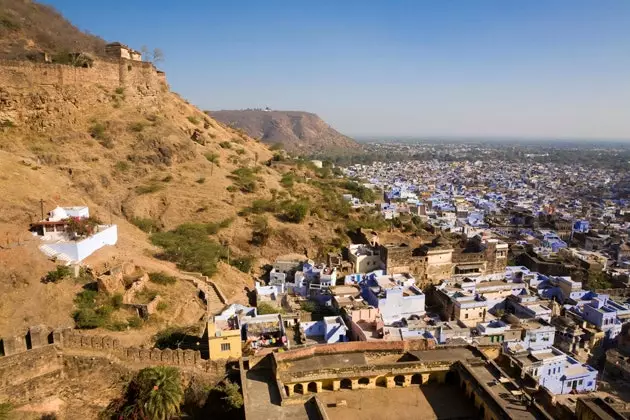
Bundi, a real corner of India
We will not say that it is a paradise of silence and pure air because, like all Indian cities, suffer noise, pollution, garbage and the same heat when it touches . But it is true that in Bundi still retains the charm of true India , with its markets, narrow alleys, blue-painted houses, Maharajas' palaces, lakes, green hills and an intense street life, because the footprint of globalization is not so marked. Who wants to immerse themselves in a real India , with the good and the bad that this entails, let him go to Bundi and take a walk around these places :
GARH PALACE
Kipling said of this place that seemed built by goblins rather than men . On top of a mountain rests the impressive garh palace , which takes your breath away from a distance and even more so at short distances. It was built during the reign of Maharaja Rao Ji Heruled, between 1607 and 1631. Its poor state of preservation gives it a decadent and romantic air and the scarce or null presence of tourists (especially in low season), make the traveler feel like an Indiana Jones about to make the discovery of his life.
The calls elephant gates , with two gigantic carved pachyderms on top, opens the visit to a series of breathtaking rooms. Some sport gold and turquoise wall paintings; others, fine works of marble, mirrors and colored glass… The balconies enjoy meticulous filigree work and the patios are profusely decorated: from capitals with elephants to precious paintings on the walls.
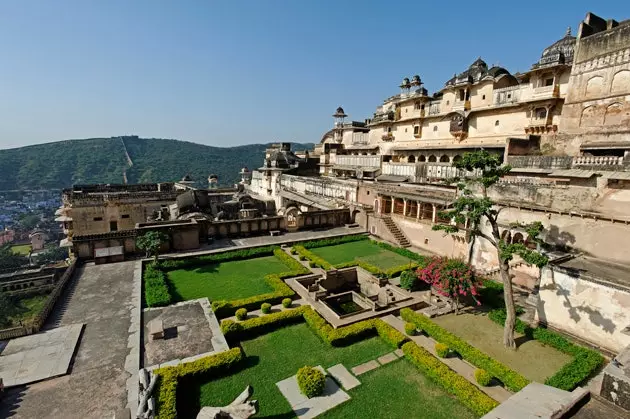
garh palace
CHITTRASALA
In the Garh palace itself, it was the pavilion for women. It is an 18th century enclosure accessed through an exquisite hanging garden from which there are scandalous views of Bundi. Only a room profusely decorated with paintings describing the life and miracles of the god Krishna is open to the public. In the background is the jewel in the crown, the Sheesh Mahal : a vaulted room completely covered by paintings with thousands of details that, although quite damaged, is a wonder that is hard to forget.
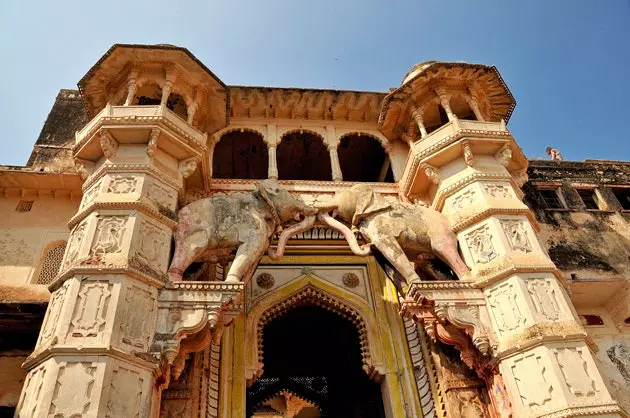
Elephant Gates at Garh Palace
TARAGARH FORT
It flanks the Garh Palace , so you can take advantage of the excursion to one to see the other. In very hot seasons -from April to June- the high temperatures can discourage you from visiting it, but it is worth it. It was built on top of a hill, 700 meters above sea level, in the year 1354. Even today it contains three water tanks carved into the rock and designed to withstand long periods of sieges. Thanks to the ingenious method with which they were built, they have never dried out, but since the fort is abandoned, they are only used by monkeys. as a swimming pool and rest area in which to delouse or take a nap.
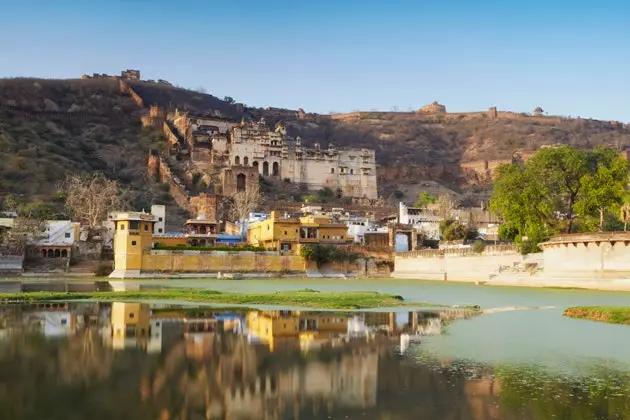
Taragarh Fort, 700 meters altitude
THE LAKES OF BUNDI
There are two lakes near Bundi: a little one called Jait Sagar and the largest and best known, the nawal sagar . The first presents a very neglected appearance, full of garbage. The second, along whose margin a road passes, is artificial and is practically covered by water lily plants. A temple dedicated to Varuna, the Vedic god of water, seems to float in the middle. The visit is not as interesting as the walk to get there, although, once there, you can hire excursions to go bird watching.
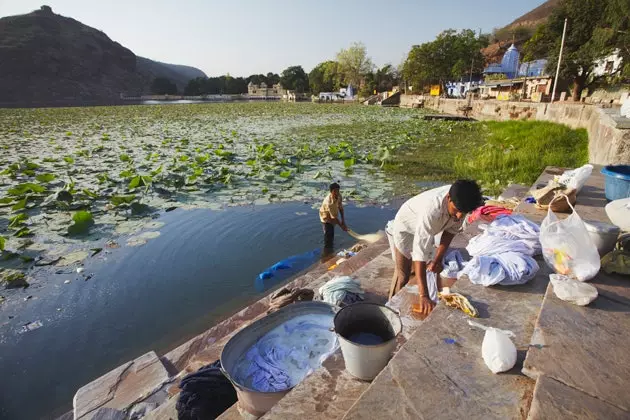
Jait Sagar, the small lake of Bundi
THE WELLS
Bundi is also famous for its wells, old constructions, now in disuse, scattered throughout the old town. There are about 60 left and they are all dry and neglected. The most famous, called Raniji ki Baori or queen's well, goes almost unnoticed because it is hidden behind a padlocked metal fence. It is 46 meters deep and decorated with many reliefs . That they are not very clean should not be a reason to miss them: they are beautiful despite their unkempt appearance.
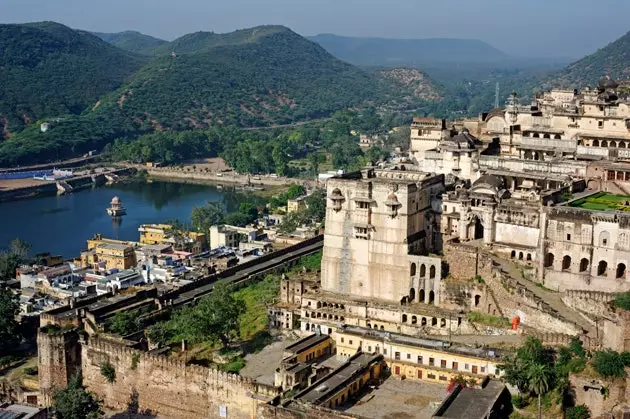
Nawal Sagar, the best known lake and at the foot of Garh
THE HAVELIS
A very typical construction are the havelis, typical of Rajasthan . They are the old residences that had the highest classes, and specifically the Marwari, a Muslim ethnic group of merchants of Indo-Aryan origin. The havelis can reach four stories high and they have between two and four patios, some for men and others for women. Its interior is a mess: the rooms, each of a different size, are scattered in a disorderly manner throughout the heights of the houses, they are connected by narrow corridors and steep stairs.
At the top they usually have a large terrace. Nowadays many havelis have been converted into guesthouses, so it is not difficult at all to get to know one from the inside and live in it. The terraces, precisely, they are the biggest tourist attraction because they are offered as restaurants with views . It is also very interesting to look at the mural paintings that adorn the facades of these buildings.
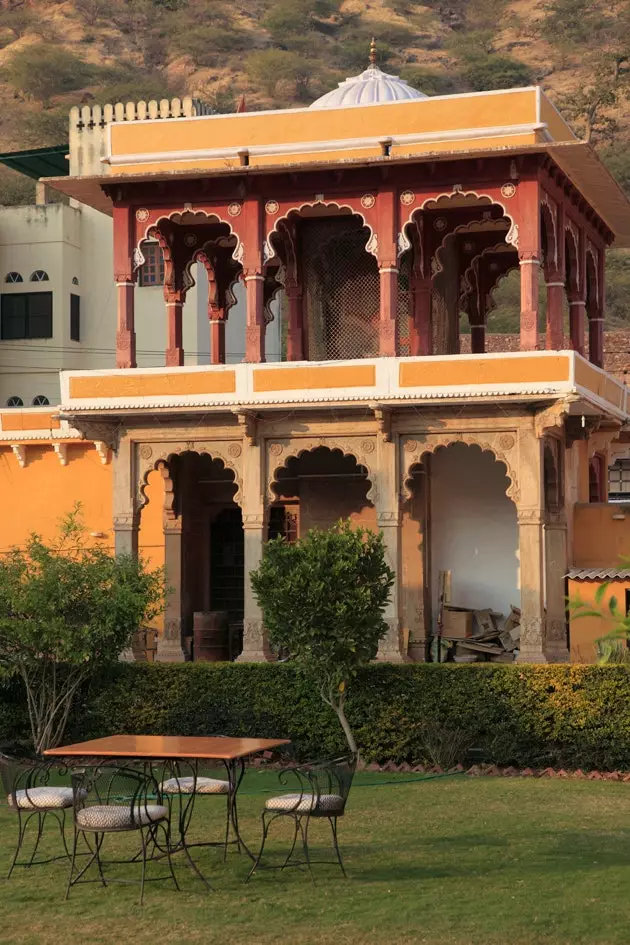
Haveli, the typical construction of Rajasthan
AND FOR DESSERT... GET LOST
Bundi has an intense local life. It is noisy and chaotic like all Indian cities. Its main street, narrow and always crowded with cows, motorcycles and motorcars that honk their horns as if there were no tomorrow, is frightening. But let no one stay here, because Bundi hides life and color in the labyrinthine streets hidden behind that uncomfortable main road. In them the children play freely, the women, dressed in saris of a thousand colors, chat in the doorways; the faithful pray in the temples, cows, dogs and pigs walk freely and the trades are practiced in the middle of the street: washermen, cooks, goldsmiths, shoemakers and various merchants spend hours sitting on the floor negotiating, collaborating and, ultimately, going about their business from their tiny establishments.
In fact, There is nothing more entertaining than getting lost in the city souk and spend a few hours shopping bangles (the typical bracelets worn by dozens of women on their arms), commissioning a handmade saree or, simply, sitting down for a while with a merchant at his little stall to chat or barter, a practice that is still very common in remote places like this.
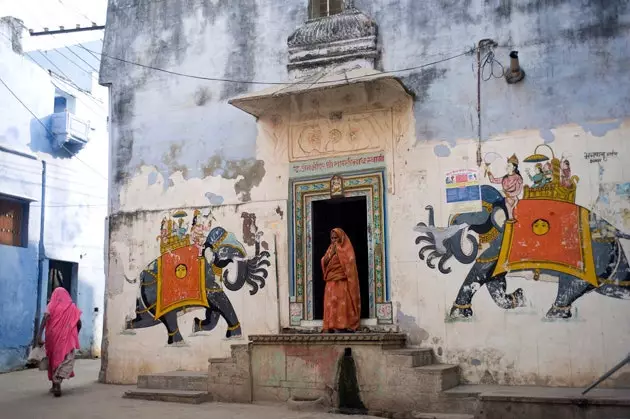
Day to day in Bundi
ADDITIONAL INFORMATION
The most important thing is knowing how to get there. Located at the foot of a hill topped by the impressive Nawal Sagar Lake, Bundi is connected by buses that depart from cities such as Jhodpur, Jaipur or Chittorgarh. It also has a train station about seven kilometers from which it is easy to reach the city in a motorcycle or rickshaw. The most important railway that passes through here is the Mewar Express , leaving from Chittorgarh and Udaipur in one direction and from New Delhi in the other.
* You may also be interested in...
- Pondicherry, we tour the city-scenario of The Life of Pi
- Kerala: the tranquil tropics
- Bombay: a walk through 100 years of Bollywood
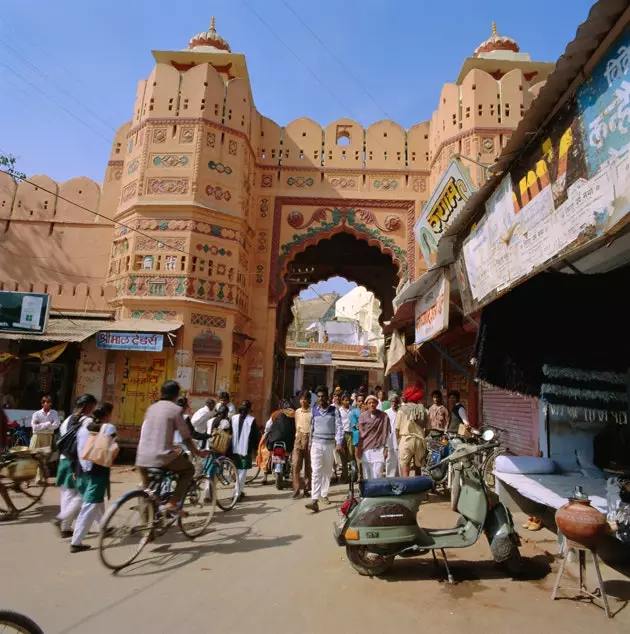
An ordinary day in chaotic Bundi
